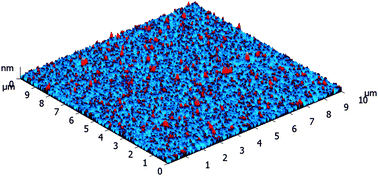Surface area or diameter – which factor really determines the antibacterial activity of silver nanoparticles grown on TiO2 coatings?
Abstract
Titanium dioxide coatings were prepared on Si wafers using the sol–gel method. Four different types of coatings with silver nanoparticles (AgNPs) were synthesized. The diameter and surface density of AgNPs were conditioned by the concentration of Ag+ ions in the initial solution, time and UV illumination source. The bactericidal activity of AgNPs on the titanium dioxide coatings against the S. aureus strain were calculated as the percentage of the inhibition of bacterial growth after 24 hour incubation of microorganisms at 37 °C on TiO2 coatings with AgNPs. Control samples were coated with titanium dioxide without AgNPs. We concluded that the titanium dioxide coatings modified with silver nanoparticles had a high antibacterial activity. Moreover, we demonstrated strong dependence between surface areas of AgNPs and inhibition of bacterial growth. The obtained results evidence that the surface area of AgNPs grown on titanium dioxide coatings is a major factor determining their antimicrobial potential.


 Please wait while we load your content...
Please wait while we load your content...